church wall
church wall
Silver Street
There is a significant difference in levels between the churchyard of St John's church and the street level of Silver Street below that has always necessitated a large churchyard wall which is more a retaining wall than anything else. Until about 1806 a row of small thatched dwellings, little more than shacks, were built up against the churchyard wall.
The Churchwardens' accounts for the year 1556 record the following as repairs to the churchyard wall -
|
For
carrying
of 12
Lode of
Stones
for the
Wall in
Cyard For the same stones For Lyme To Walter Whedon for makying the same |
6s
8d
7s 8d |
In 1581 was recorded -
| To Belk for his work in taking down the Churchyard Wall and carrying the Stone to the Bearhouse | 1s 6d |
A major rebuilding of the churchyard wall took place in 1621 and is commemorated by a datestone, photographed below, set into the wall opposite the entrance to the Quedam.
On 10th October 1758 the Churchwardens' accounts show the entry "At a Vestury duly Calld And this day held We whose names are hereunder Subscribed do agree that the present Church Wardens do forth with put the Church Wall in good repair as is now tumbled down near to Nun Well."
Major rebuilding of the churchyard wall was undertaken in 1587 and the Churchwardens' accounts show the following items -
|
to
Edmund
Willis
for 6
loode of
Stones to John Hawkyns for 4 (loads of) stones for the butter(ess) of the saide wall at Hamdon hill for the carage of the same stone to the masons for 24 (days) of worke about the same wall to John Toker for carage of the saide 6 loode of stones to Rychard Hammonde for ryddinge of the gutter for the worke of the wall for carainge of the stones out of the beere house to the wall for carainge of three horse loods of sand to make mortar for a sacke of lyme for 28 foote of freestone and copynge stones to Thomas Willes for makyinge of a gymme of a sledge and for nayles for the same for the careadge of the said 28 foote of freestone from Hamdon hill more to Edmonde Willis for stones to Will'm Jenyng of Kingston for carrynge 10 potfoules of stone for settinge of the said copynge stones and for poyntinge of the wall and mendynge of the broad church style for a sack of Lyme to make an ende of poyntinge the wall more to the masons for settynge of the old coopinge stones & for poyntynge of the same wall Sum |
4s
0d 3s 4d 16d 22s 0d 6s 0d 12d 4d 4d 14d ?? 3d 2s 0d 4s 0d 5s 0d 2s 0d 16d 3s 10d £3 8s 3d |
The sum of £3 8s 3d in 1587 would roughly be about £10,000 at today's value.
The churchyard was originally fenced in to prevent horses and other animals wandering across at will and in 1702 Richard Day was paid 4d for mending the church gates. They were repaired again in 1721. In 1735 the Churchwardens' accounts show a payment of £3 3s 0d for "168 ffoot of Oaken Post at 4½d per foot, 130 ffoot of Oak Rails at 2½d per foot" plus "Board Labour & nails about the Church gate". £1 4s 0d (just over £2,000 at today's value) was paid for "18 Days work for Taylor & his men" plus a payment of 4s 6d (something like £400 at today's value) for "Beer for the workmen".
The next repairs to the wall were in 1717 when Thomas Hulett was paid £1 15s 0d "for Mending the Church Wall & ye Chansell Steps". The "little church steppes" (by the Borough) were repaired in 1725.
The Minutes of the Town Commissioners' Meeting of 2 November 1830 recorded "Ordered that the Beadle be instructed to request all Coal Carriers bringing Coal for Sale into the Town, to draw up their Waggons under the Church Wall with a view of preventing destructions in the Streets and of establishing a permanent Coal Market."
In 1886 the churchyard steps, which had originally been close to the chancel of St John's church, was moved to their present position, aligned with Church Street on the opposite side of the churchyard. A datestone, photographed below, commemorates this rebuilding. The churchyard had gates at the broad steps until relatively recently, as seen in the first photograph below.
GALLERY
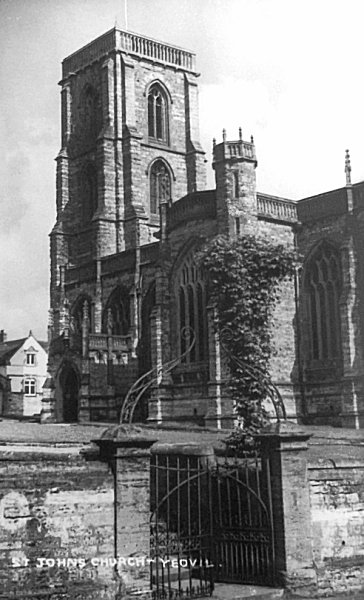
From my
collection
For generations the churchyard wall had gates - a late 1950s photograph of St John's church with its wrought iron gates by HA 'Jack' Cooper.
.
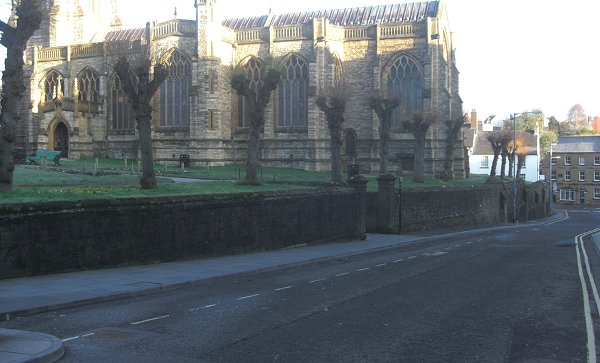
The churchyard wall seen from the Borough end of Silver Street. Photographed in 2014, very early on a Sunday morning before the road filled up with taxis.
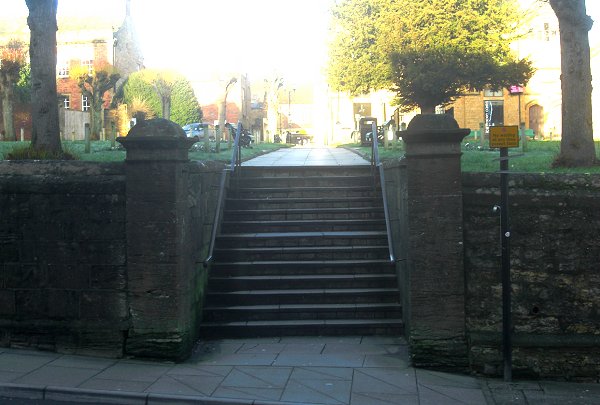
The churchyard steps in their present position, relocated here in 1886. Originally a pair of gates hung here. Photographed in 2014.
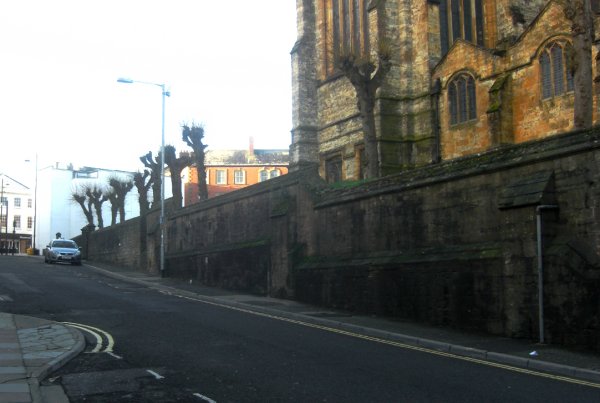
The churchyard wall seen from Silver Street but closer to Court Ash. Photographed in 2014.
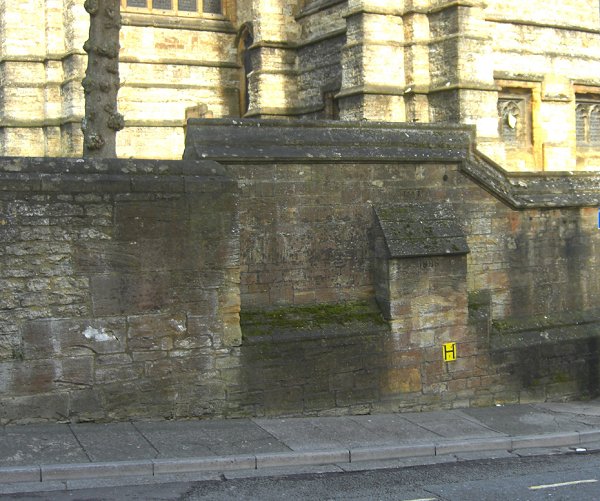
This is the original location of the churchyard steps. The 1886 datestone seen below is on the pier with the yellow hydrant sign, the 1621 datestone is just above the pier.

This photograph shows the two date-stones in the churchyard wall, opposite the entrance to the Quedam. 1621 above and 1886 below mark major refurbishments and rebuilding of the wall. Photographed in 2014.

The upper date, 1621, marks a major rebuilding of the churchyard wall. Photographed in 2014.
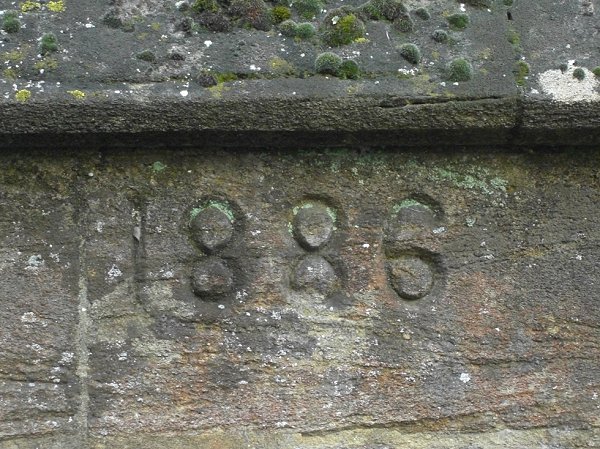
The lower date of 1886 marks when the churchyard steps were moved. The steps were originally much closer to the church but moved at this time to align with Church Street for the convenience of the public. Photographed in 2014.